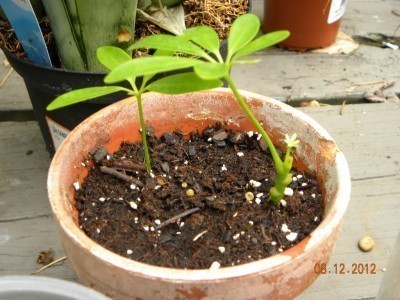






The schefflera, or umbrella tree, can make a large and attractive accent in a living room, office, or other generous space. Propagating cuttings from schefflera plants is a simple and inexpensive way to create a collection of impressive plants for gifts or home décor. Like with many other bushy plants, schefflera plant cuttings will create a perfect clone of the parent plant, with no chance of mutations as you would encounter with planting seeds. Propagate your schefflera with cuttings and you’ll have a collection of plants healthy and growing within a month or so.
How can I root schefflera cuttings? Rooting a schefflera cutting is pretty easy. Clean a sharp knife with an alcohol pad to prevent any possible spread of bacteria to your plants. Clip off a stem near the base of the plant and wrap the cut end in a damp paper towel. Cut each leaf in half horizontally to reduce the amount of moisture it loses during the rooting process.
Fill a 6-inch pot with fresh potting soil. Poke a 2-inch hole in the soil with a pencil. Dip the cut end of the cutting into rooting hormone powder, place it in the hole and gently pat the soil around the stem to secure it in place.
Water the soil and place the pot in a place that gets steady light but not direct sunlight. The stem will begin to grow roots within a few weeks. When the plant begins to grow new green shoots on top, nip off the top of the shoots to encourage branching.
Rooting a schefflera cutting is not the only way to go about schefflera plant propagation. Some growers have better luck with layering when they want to produce one or two new plants.
Layering creates new roots along the stem while it is still on the parent plant. Remove the bark in a ring around a flexible stem, near the end and below the leaves. Bend the stem down to force it into the soil in another nearby planter. Bury the cut part, but leave the leafy end above the soil. Hold the stem in place with a bent wire. Keep the soil moist and roots will form around the spot where you damaged the bark. Once new growth occurs, clip it from the original tree.
If your stems aren’t long enough to bend into another pot, damage the bark in the same manner, then wrap the area in a clump of damp sphagnum moss. Cover the baseball-sized lump with plastic wrap, then secure it with tape. Roots will grow inside the moss. When you see them through the plastic, clip off the new plant below the plastic, remove the covering and plant it in a new pot.
Copyright © www.100flowers.win Botanic Garden All Rights Reserved